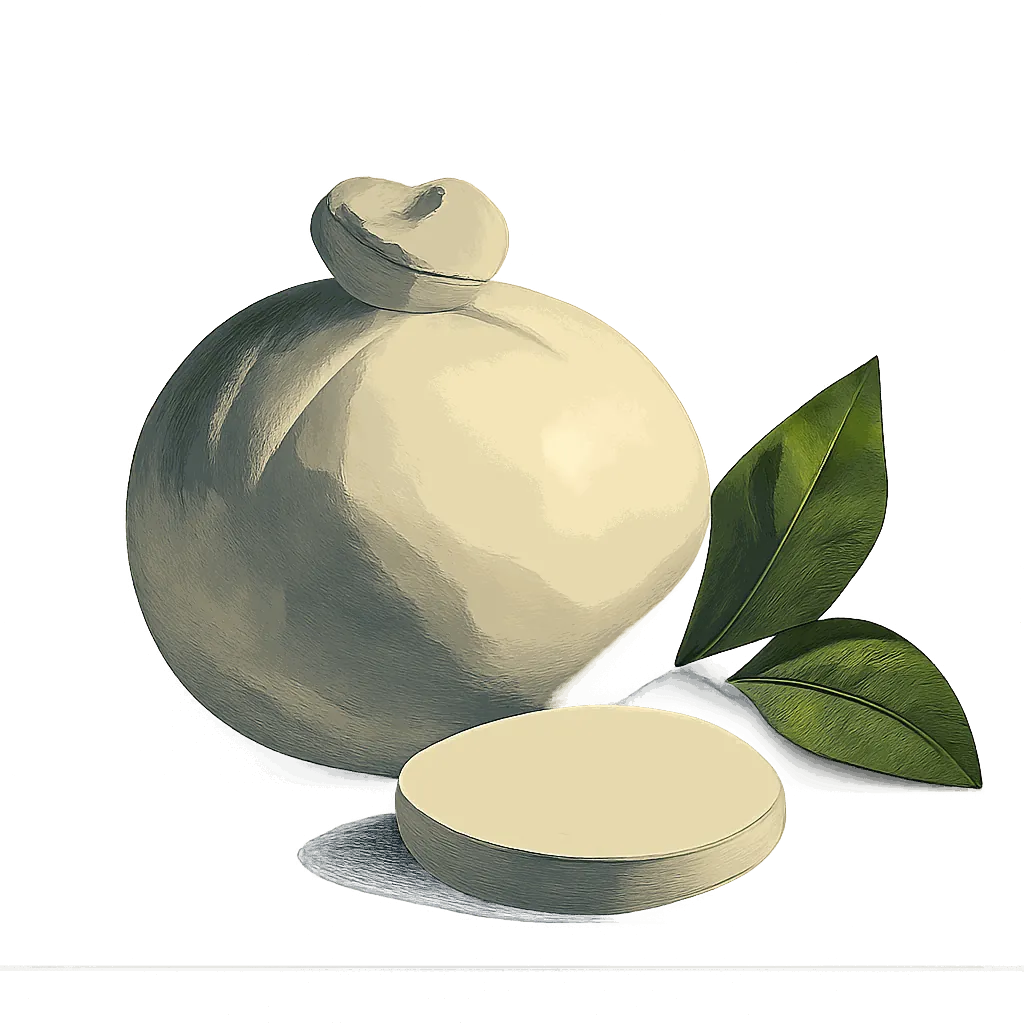Perfect Pairings & Recipes for
Côteaux Du Languedoc

Exquisite Côteaux du Languedoc flavour pairings and recipes, revealed through data science.
Côteaux du Languedoc conjures the evocative embrace of thyme and the kiss of balsam, but beneath its umami surface lies a nuanced symphony of subtle flavour notes: rosemary, basil, and even hints of barnyard, contributing remarkable depth. The alchemy of the kitchen unfolds when we pair Côteaux du Languedoc with ingredients that let these nuances sing.
To map these harmonies, we analysed thousands of ingredients, breaking each one down across 150 flavour dimensions, identifying which notes complement and contrast. Our findings reveal, for instance, how duck leg's ferrous tones can ground Côteaux du Languedoc, or how pork belly's porcine notes create an unexpectedly harmonious bridge with the earthy herbalness.
Flavour Profile Of Côteaux Du Languedoc Across 150 Dimensions Of Flavour
Flavour wheel chart showing the dominant flavour notes of Côteaux du Languedoc: Thyme, Balsam, Basil, Rosemary, Brettanomyces, Olivey, Limestone, Proteolytic, Plum, Raisin, Blackberry, Oxidized, Tobacco, Poivre, Flint, Petrichor, Leather, Ficus, Raspberry, Anise, Coconut, Caramel, Resinous, Blossom, Lavender, Vanillic, Tannic, Oaky
An ingredient's flavour comes from its core characteristics, like herbal, acidic, and floral, combined with its unique aroma notes (outer bars). When pairing ingredients, aim to include a broad variety of core characteristics for a balanced dish. And choose aroma notes that complement each other for a harmonious combination.
Unlocking Flavour Combinations
To understand exactly which flavours harmonise, we compiled a database of over 50,000 ingredient pairings commonly used in cooking. We then analysed these pairings, identifying the specific flavour notes that frequently appear together.
The Flavours That Harmonise With Thyme Notes
Strength of Association Between Flavours
The flavours most associated with thyme notes are: Gamey, Porcine, Proteolytic, Ferrous, Glutamic, Fatty, Olive, Ovine, Poultry, Dried Porcini, Chanterelle, Starch, Petrichor, Oleic, Potato.
Our analysis shows that the flavour of thyme is strongly associated with the flavour of pork. This suggests we should look for ingredients with a porky flavour, such as pork belly, when pairing with the thyme-like aroma accents of Côteaux du Languedoc.
The recipes below provide inspiration for pairing Côteaux du Languedoc with pork belly.
Harmonious Flavours Of Côteaux Du Languedoc
Just as our analysis revealed that thyme and gamey flavour notes harmonise well, we can identify the full profile of flavours that harmonise with each of the flavours present in Côteaux du Languedoc. For instance, the balsam notes of Côteaux du Languedoc are strongly associated with squash-like and charred notes.
The aroma accents complementary to the various aroma notes of Côteaux du Languedoc can be seen highlighted in the pink bars below.
Flavour Profile Of Côteaux Du Languedoc And Its Complementary Flavour Notes
Flavour wheel chart showing the dominant flavour notes of Côteaux du Languedoc: Thyme, Balsam, Basil, Rosemary, Brettanomyces, Olivey, Limestone, Proteolytic, Plum, Raisin, Blackberry, Oxidized, Tobacco, Poivre, Flint, Petrichor, Leather, Ficus, Raspberry, Anise, Coconut, Caramel, Resinous, Blossom, Lavender, Vanillic, Tannic, Oaky
Matching Flavour Profiles
The flavour profile of duck leg offers many of the aroma notes complementary to Côteaux du Languedoc, including ferrous and glutamic accents. Because the flavour profile of duck leg has many of the of the features that are complementary to Côteaux du Languedoc, they are likely to pair very well together.
Prominent Flavour Notes Of Duck Leg Are Represented By Longer Bars
Flavour wheel chart showing the dominant flavour notes of Duck leg: Caramel, Iron, Oleic, Proteolytic, Hazelnut, Glutamic, Gamey, Adipose, Fungus, Musky, Buttery, Resinous, Lactic, Leather, Poultry, Walnut, Milky, Sulfurous
The chart above shows the unique profile of duck leg across 150 dimensions of flavour, while the recipes below offer inspiration for bringing these flavours together with Côteaux du Languedoc.
Recipes That Pair Côteaux Du Languedoc With Duck Leg
Linked Flavour Notes
Looking at the aroma notes that are most strongly associated with the various flavours of Côteaux du Languedoc, we can identify other ingredients that are likely to pair well.
Côteaux Du Languedoc's Harmonious Flavours And Complementary Ingredients
Côteaux du Languedoc's Strongest Flavours
Complementary Flavours
Ingredients with Complementary Flavours
Flavour groups:
Nectarous
Acidic
Floral
Herbal
Spice
Vegetal
Maillard
Earthy
Carnal
The left side of the chart above highlights the aroma notes of Côteaux du Languedoc, along with the complementary aromas associated with each note. While the right side shows some of the ingredients that share many of the aroma notes complementary to Côteaux du Languedoc.
Prominent Pairings
Our analysis identifies dishes that pair well with Côteaux du Languedoc and highlights the prominent ingredient combinations within these recipes. Key pairs include grapeseed oil and Dijon mustard offering pungent aroma, extra virgin olive oil and Champagne for tartness, Madiran and breadcrumbs for triticeous depth, and duck fat and Côtes du Roussillon for a complex brambly undertone. Explore these combinations to unlock Côteaux du Languedoc's hidden complexity, reveal deep nuance, and elevate its vibrant character.
Ingredient Combinations Among Dishes That Pair With Côteaux du Languedoc
Flavour groups:
Sour
Botanic
Herbal
Spice
Bitter
Umami
How Flavonomics Works
We've pioneered a unique, data-driven approach to decode the intricate art of flavour pairing. Our goal is to move beyond intuition and uncover the science of why certain ingredients harmonise beautifully. This rigorous methodology allows us to provide you with insightful and reliable pairing recommendations.
Our analysis begins with over 50,000 carefully selected recipes from acclaimed chefs like Galton Blackiston, Marcello Tully, and Pierre Lambinon. This premium dataset ensures our model distils genuine culinary excellence and creativity.
Each ingredient from these recipes is deconstructed across 150 distinct flavour dimensions, creating a unique numerical "flavour fingerprint." This quantification allows us to apply advanced analytical methods to identify complex patterns between flavour notes.
We identify popular ingredient combinations that frequently appear in our recipe database. Regression analysis is then performed on these pairings to statistically validate and pinpoint truly harmonious flavours.
These insights drive our predictive model, which allows us to take any ingredient (e.g., Côteaux du Languedoc), analyse its detailed flavour profile, and accurately reveal its complementary flavours and perfect ingredient partners.
Explore More
Discover more ingredient profiles and expand your culinary knowledge. Each ingredient page offers detailed analysis of flavour profiles, pairing insights, and culinary applications.
The content on our analysis blog is semi-automated. All of the words were manually written by a human, but the content is updated dynamically based on the data.


